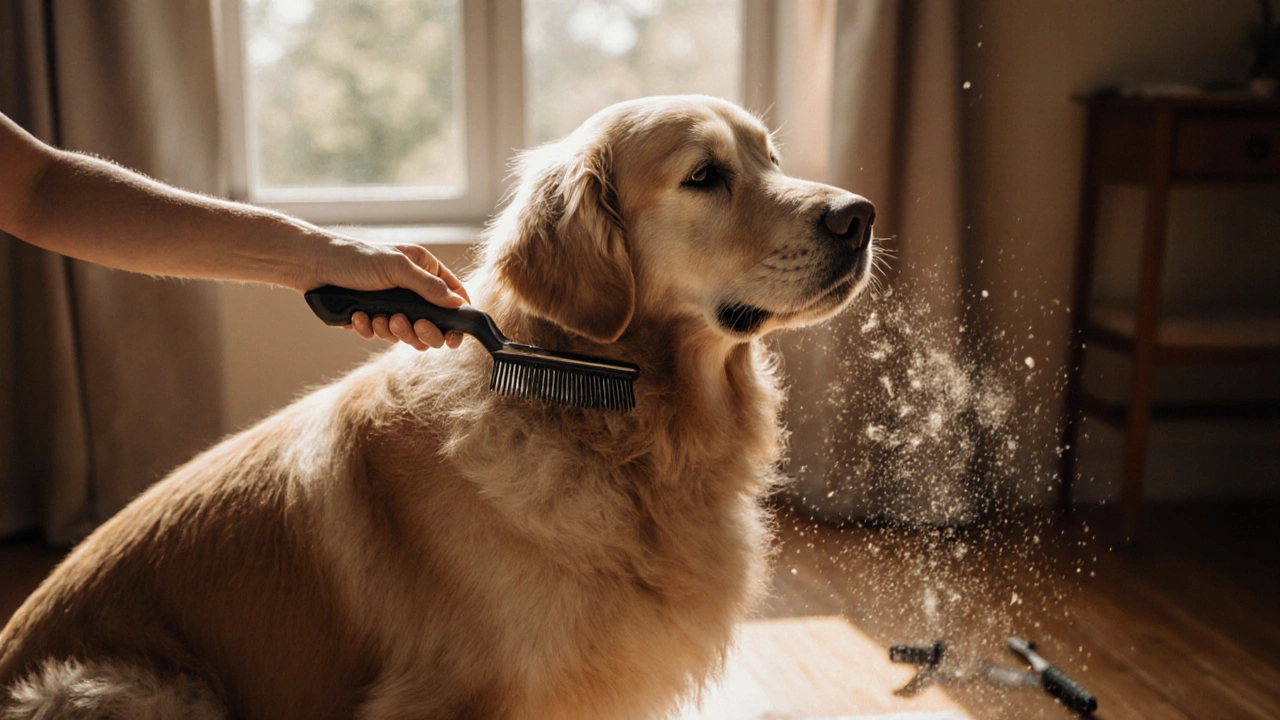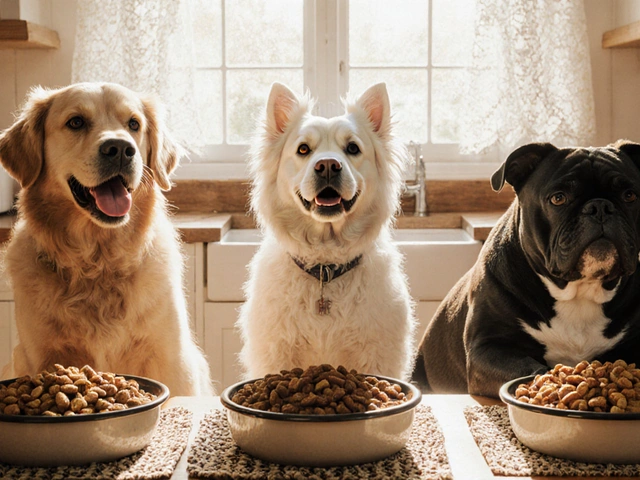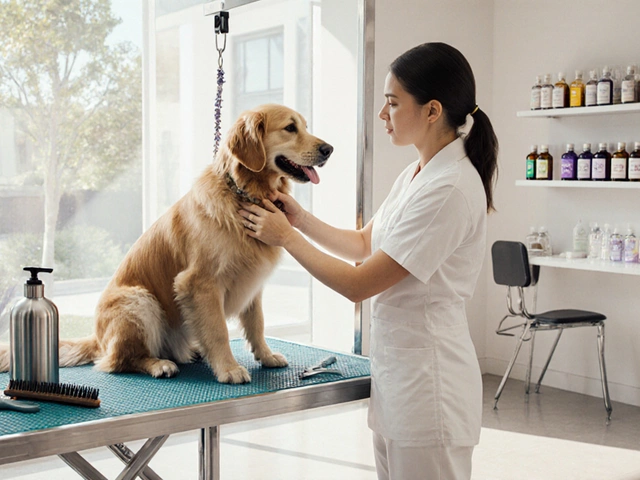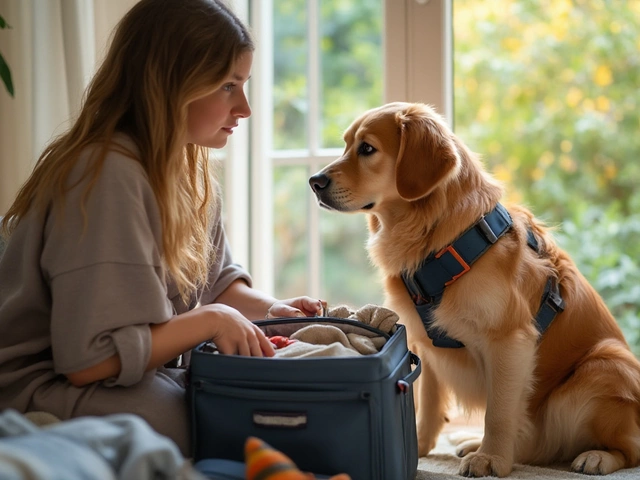Not all dogs need the same level of grooming. A Poodle doesn’t need the same care as a Labrador. And if you think brushing your dog once a month is enough, you might be setting them up for skin problems, matted fur, or even painful ear infections. The truth? Grooming isn’t just about looking nice-it’s about keeping your dog healthy, comfortable, and safe.
It Depends on the Coat Type
Your dog’s coat is the biggest factor in how often they need grooming. There are four main types: short, medium, long, and curly or wiry. Each has different needs.
Short-coated dogs like Beagles, Boxers, or Greyhounds shed a lot, especially in spring and fall. They don’t need baths often-once every 4 to 6 weeks is plenty. But they still need brushing at least once a week. A rubber curry brush works wonders here. It removes loose hair, stimulates the skin, and reduces shedding around the house. Skip this, and you’ll find fur on your couch, your clothes, even your coffee mug.
Medium-coated dogs like Golden Retrievers or Border Collies have a double coat. That means they shed heavily twice a year during seasonal changes. During those times, daily brushing is non-negotiable. Outside of shedding season, brush them 2 to 3 times a week. Use an undercoat rake to get through the thick underlayer. If you don’t, those mats can trap moisture and dirt, leading to hot spots or skin infections.
Long-coated dogs like Shih Tzus, Afghan Hounds, or Maltese need daily brushing. Left unattended, their fur tangles into knots that pull on the skin. These knots aren’t just ugly-they hurt. And if you wait too long to deal with them, you’ll end up shaving the whole coat off. That’s expensive and stressful for your dog. Bathe these breeds every 3 to 4 weeks, but always dry them completely. Wet long hair = mold, yeast, and stinky skin.
Curl and wire-coated dogs like Poodles, Bichon Frises, or Schnauzers need professional grooming every 4 to 8 weeks. Their hair keeps growing, and if it’s not trimmed, it gets in their eyes, ears, and paws. These breeds also need hand-stripping or clipping to keep their coat texture right. Don’t try to do this yourself unless you’ve been trained. A bad clip can ruin their coat for months.
Bathing Frequency: More Isn’t Better
Many people think dogs need a bath every week. That’s wrong. Over-bathing strips natural oils from their skin. That leads to dryness, itching, and even allergic reactions. Most dogs only need a bath every 4 to 6 weeks. Unless they roll in mud, dead animals, or skunk spray.
Use a dog-specific shampoo. Human shampoo is too harsh. It changes the pH of their skin and can cause rashes. Look for formulas labeled for sensitive skin if your dog scratches a lot. And always rinse twice. Leftover shampoo is a common cause of skin irritation.
Between baths, use dry shampoo sprays or wipes for quick cleanups. These are great after walks in muddy fields or if your dog just got a little dirty. They’re not a replacement for full baths, but they help between washes.
Other Grooming Tasks You Can’t Ignore
Grooming isn’t just about brushing and bathing. There are other essentials that many owners forget.
- Nail trimming: If you hear clicking on the floor, it’s time. Most dogs need nails trimmed every 3 to 4 weeks. Long nails cause posture problems, joint pain, and can even grow into the paw pad. Use guillotine-style clippers or a Dremel tool. Always have styptic powder on hand in case you cut too close.
- Ears: Dogs with floppy ears-like Basset Hounds or Cocker Spaniels-are prone to infections. Check their ears weekly. If they smell bad, look red, or have dark discharge, see a vet. Clean them gently with a vet-recommended solution and cotton balls. Never use Q-tips inside the ear canal.
- Teeth: Brush your dog’s teeth at least 2 to 3 times a week. Use dog toothpaste (never human toothpaste). Tartar buildup leads to gum disease, which can cause heart and kidney problems. Dental chews help, but they’re not a substitute for brushing.
- Anal glands: Most dogs express these naturally. But if your dog is scooting on the carpet or licking their rear constantly, they might be impacted. This is not something to try at home. A vet or professional groomer should handle it.
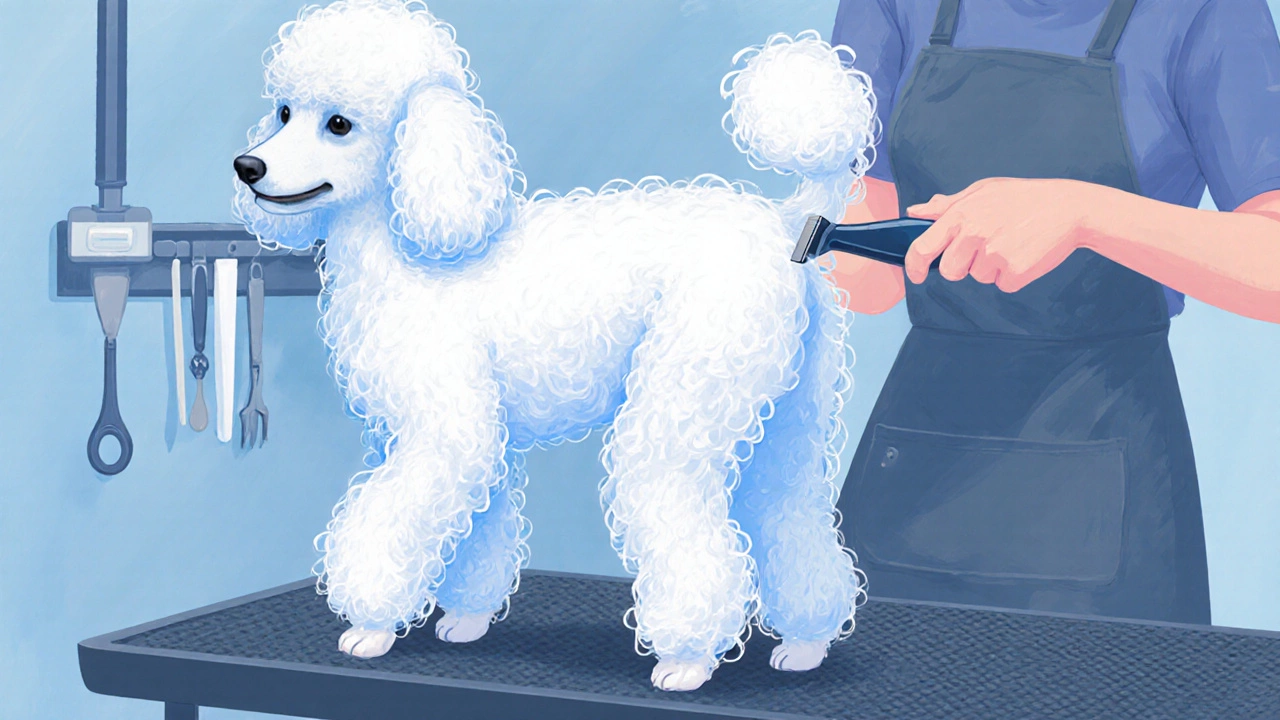
Professional Grooming: When to Go
You don’t have to do everything yourself. Professional groomers can save you time and prevent mistakes. But you should still do daily brushing at home.
Here’s a simple rule: If your dog has a coat that needs clipping, trimming, or hand-stripping, book a professional every 4 to 8 weeks. That’s the sweet spot. Going longer means matted fur. Going more often is expensive and stressful for your dog.
Choose a groomer who asks about your dog’s behavior, skin condition, and any health issues. Avoid places that rush through appointments or use loud dryers without breaks. A good groomer will let your dog rest between steps and will never force them.
Some groomers offer “puppy packages” for young dogs. These are great for getting your dog used to being handled. Start early. Even if your puppy doesn’t need a full groom, a 10-minute session with gentle brushing and nail trimming builds trust.
Seasonal Changes Affect Grooming Needs
Winter and summer change what your dog needs.
In winter, salt and ice melt chemicals on sidewalks can irritate paw pads. Wipe your dog’s feet after every walk. Some owners use booties, but even just a damp cloth helps. Dogs with long hair between their toes should have that trimmed to prevent ice balls from forming.
In summer, avoid shaving double-coated dogs. Their undercoat protects them from sunburn and overheating. Instead, brush out the loose undercoat. This lets air circulate and keeps them cooler than a shaved coat ever could.
Also, ticks and fleas are more active in warm weather. Use monthly preventatives. Grooming is your chance to check for them. Run your fingers through the fur-especially behind the ears, under the legs, and around the tail.
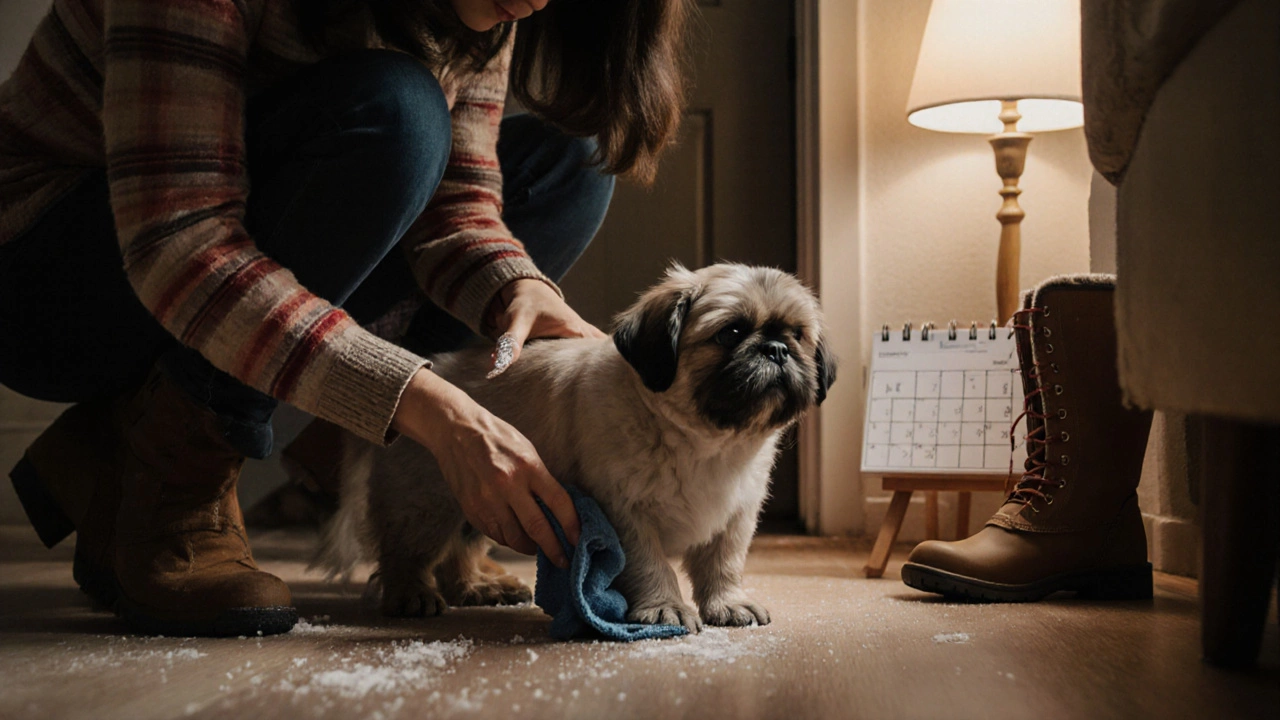
Signs You’re Grooming Too Little-or Too Much
Here’s how to tell if your routine is working:
- Too little: Matted fur, strong odor, excessive shedding, red or flaky skin, dirt in ears, overgrown nails, scooting.
- Too much: Dry, brittle coat, skin redness, hair loss in patches, constant itching after baths, behavioral stress during grooming.
If you notice any of these, adjust your routine. For example, if your dog’s skin gets dry after every bath, switch to a moisturizing shampoo or reduce baths to every 8 weeks. If they hate brushing, try a slicker brush instead of a pin brush. Find what works for their personality.
What About Short-Haired Breeds? Do They Even Need Grooming?
Yes. Even a Chihuahua needs regular care. Short-haired dogs shed. They pick up dirt. Their nails grow. Their ears collect wax. Skipping grooming because they look “low maintenance” is a mistake.
They just need less of it. Brush them once a week. Check their ears every few days. Trim nails every month. Brush teeth twice a week. That’s it. But do it consistently. A few minutes a week saves you from vet bills later.
Final Rule: Build a Routine, Not a Crisis
The best grooming schedule isn’t one you follow once a month. It’s one you do a little bit every day.
Make brushing part of your evening routine. Check paws after walks. Wipe ears during cuddle time. Trim nails while watching TV. These small habits prevent big problems.
And remember: grooming isn’t a chore. It’s bonding time. Your dog learns to trust you. They relax. They look forward to your hands on their fur. That’s worth more than a clean coat. It’s the foundation of a healthy relationship.
How often should I brush my dog?
It depends on the coat. Short-haired dogs need brushing once a week. Medium-haired dogs need 2 to 3 times a week. Long-haired and curly-coated dogs need daily brushing. During shedding season, increase frequency to daily for double-coated breeds.
How often should I bathe my dog?
Most dogs only need a bath every 4 to 6 weeks. Bathing too often dries out their skin. Only bathe more frequently if they get extremely dirty, roll in something smelly, or have a skin condition your vet recommends treating with medicated shampoo.
Do I need to take my dog to a professional groomer?
If your dog has a curly, wiry, or long coat that requires clipping or trimming, yes-every 4 to 8 weeks. For short-haired dogs, professional grooming isn’t necessary unless you want a special trim or your dog is too anxious for you to handle grooming at home.
Can I use human shampoo on my dog?
No. Human shampoo is too alkaline for a dog’s skin. It can cause dryness, itching, and rashes. Always use a shampoo made specifically for dogs. Look for fragrance-free or oatmeal-based formulas if your dog has sensitive skin.
What happens if I don’t groom my dog?
Matted fur traps moisture and bacteria, leading to skin infections. Overgrown nails cause pain and posture issues. Dirty ears can lead to chronic infections. Untrimmed nails can grow into the paw pad. Poor dental hygiene increases the risk of heart and kidney disease. Skipping grooming puts your dog’s health at serious risk.

